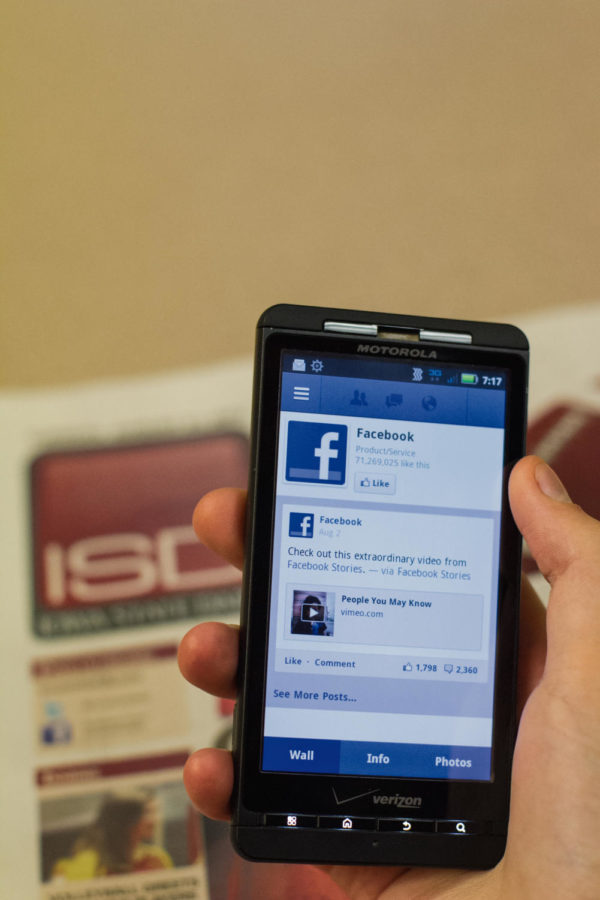Lawson: Facebook takes action to end ‘fake news’
Photo: Megan Wolff/Iowa State Daily
Stock social media photo
March 7, 2017
It is unfortunate that there has always been a presence of “fake news” in the media, and in recent days, there has been an overwhelming presence of it.
The problem is that this fake news is circulating more than the facts, and because of analytics, these fake stories often appear at the top of searches and timelines.
Countless fake news stories that claimed fake news played a vital role in the election results circulated during the presidential election.
As a result of people’s dislike for fake news and viewers misinterpreting fake news for real news, Facebook debuted fake news tags on Sunday that will appear on these disputed posts.
The tag actually reads “disputed news.” These fake news stories will be determined by an algorithm and then flagged if the story meets too many requirements.
There is some potential backlash. People who share fake news stories are claiming that they are being censored and that Facebook is forcing some form of political agenda on them.
Another potential consequence of the disputed news tag is a decrease in engagement among users. This seems to be the biggest threat for Facebook, because if engagement decreases, the social media site will give leverage to its competition.
Nonetheless, these arguments are invalid. The articles will be flagged but not removed. People will still be able to post, share and comment on fake news articles. There is no infringement on their rights or any agenda pushed by Facebook.
Facebook has chosen to take a proactive step in correcting the fake news cycle; something that should have been done a while ago and something that needs to be adopted by all major social media sites.
According to a study by the Pew Research Center in 2016, 38 percent of people surveyed get their news from online sources. Because so many people don’t get their news from the typical news channels and instead from various social media accounts, it is the responsibility of these online sites to give proper notice to their users when they consume fake news.
It is also the responsibility of the news consumer to make sure that their news sources are actual news outlets and not fake or biased sources. How can readers do this? Make sure that the publisher is real; a simple Google search will tell you the majority of what you need to know.
Checking the home page of the sites before sharing or retweeting can also give some insight into whether they are a real news outlet. Check the sources and don’t be bamboozled by studies. The presence of data makes everything seem more legitimate, but there are hundreds of ways to manipulate data to your liking.
This measure taken by Facebook is great; there are too many fake news stories being read and relayed to people. Currently, there is no way to stop these stories from being circulated entirely, but this is the first step in removing them from our timelines and home screens.







